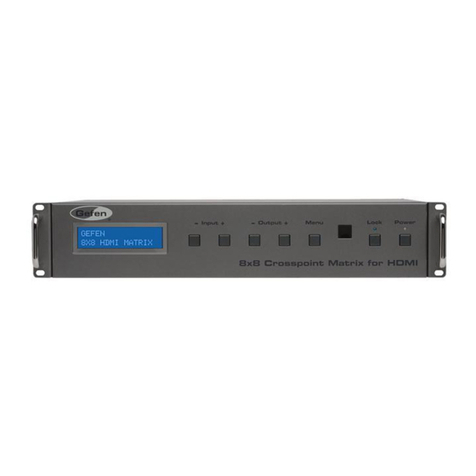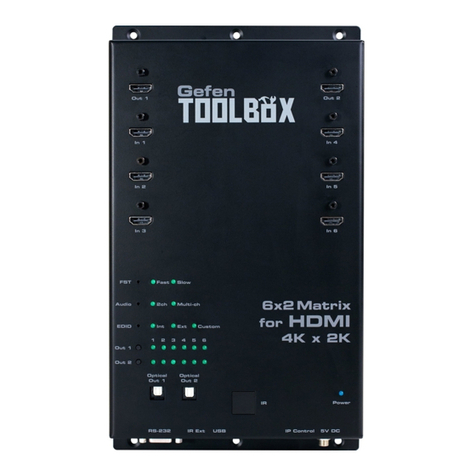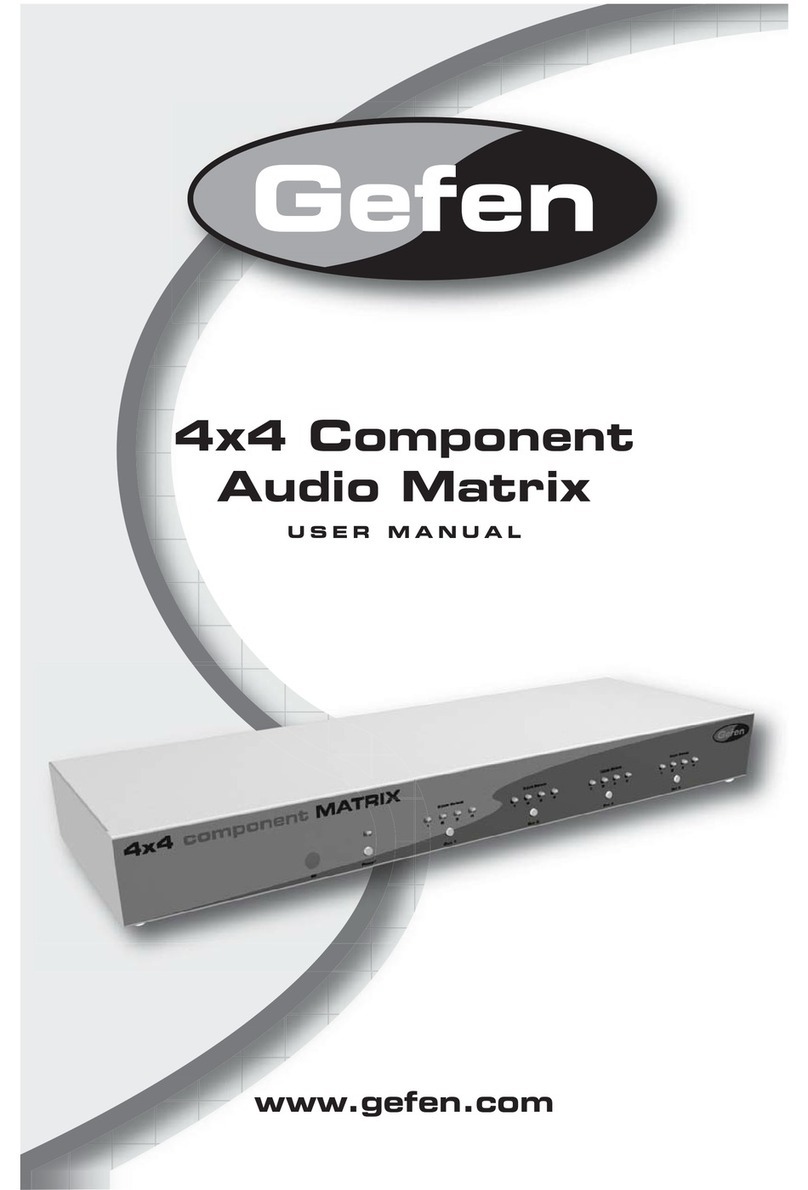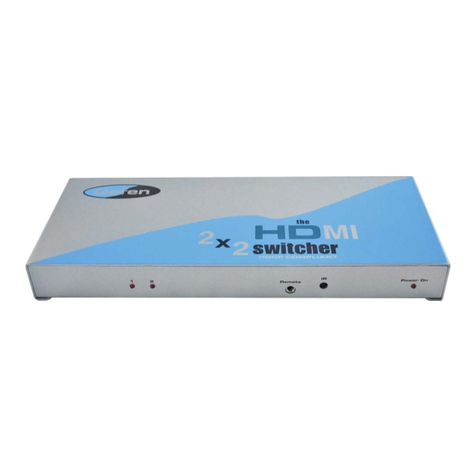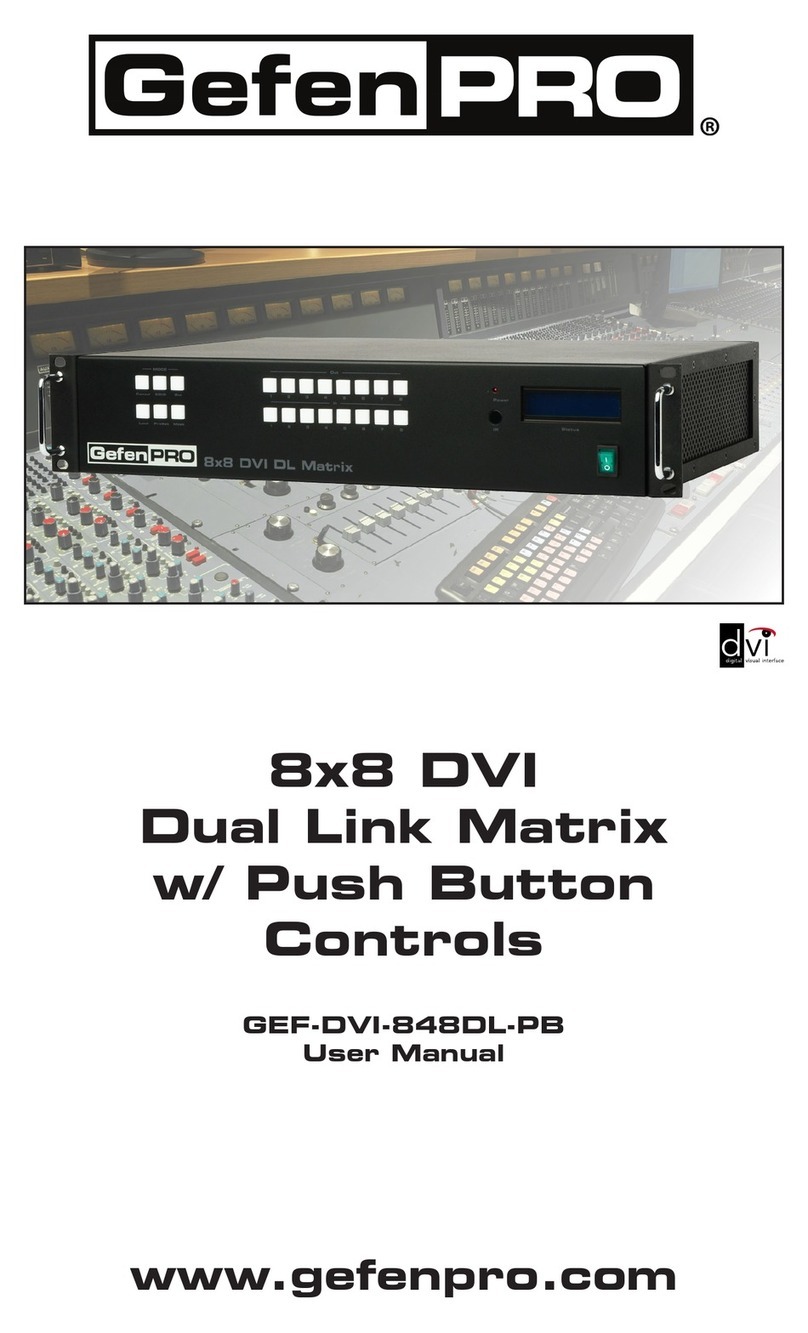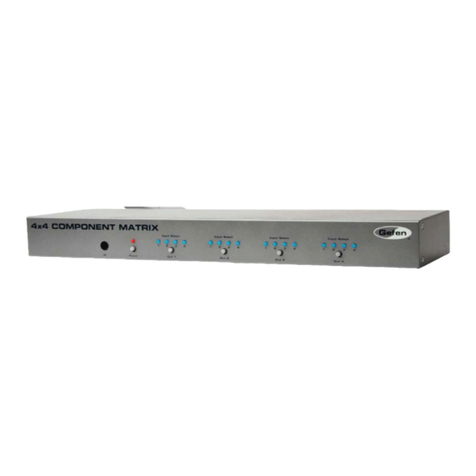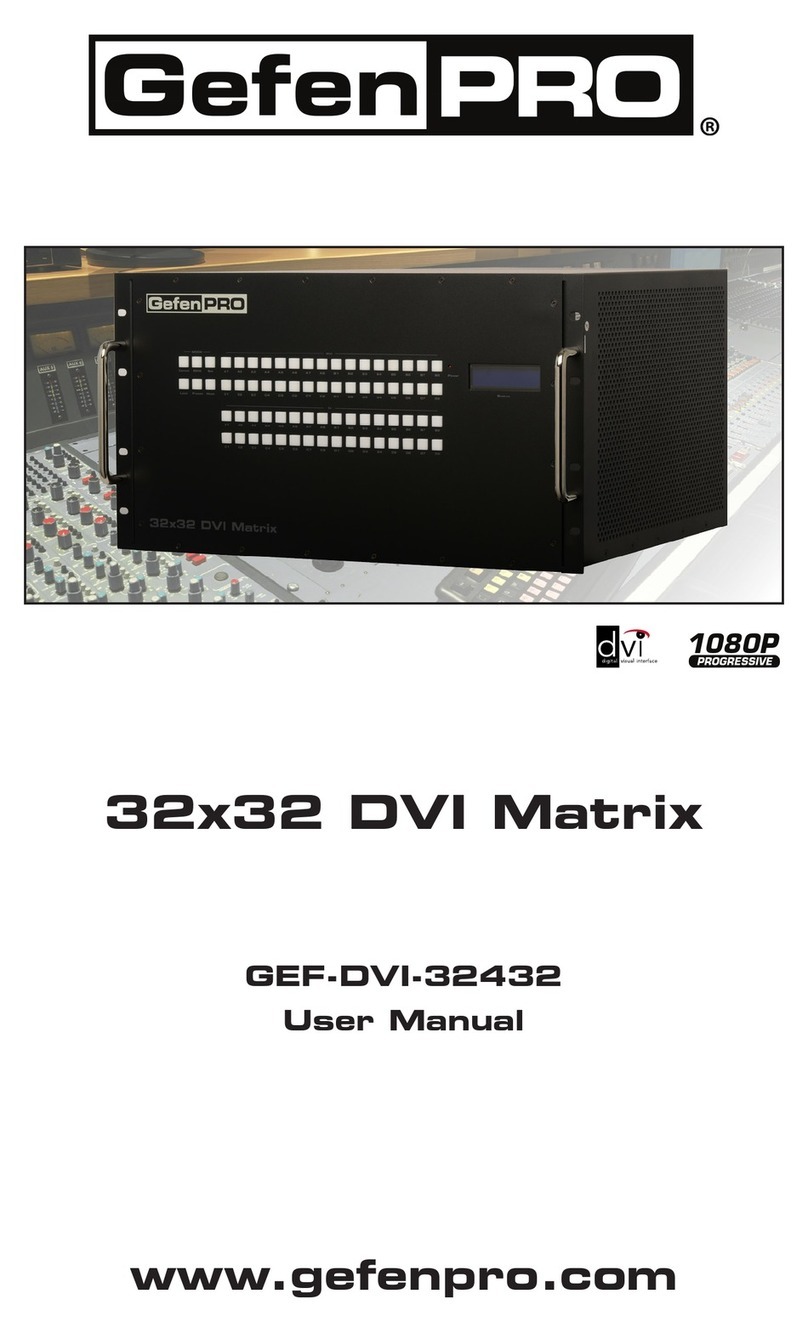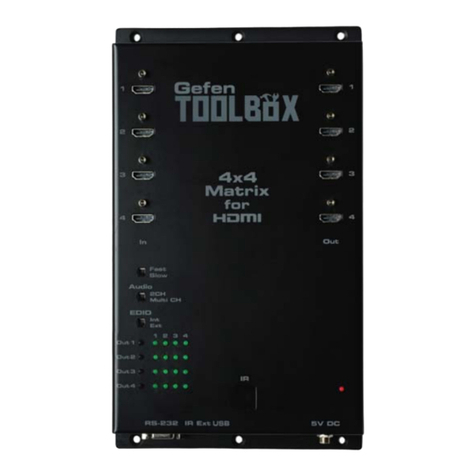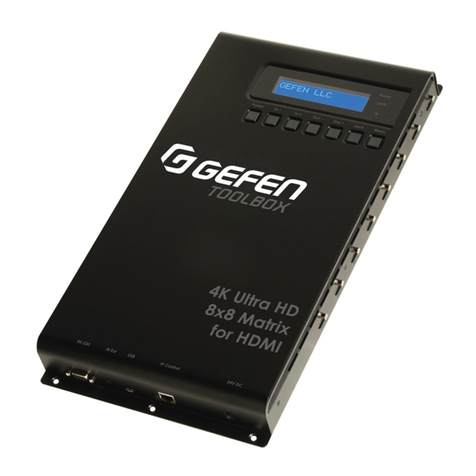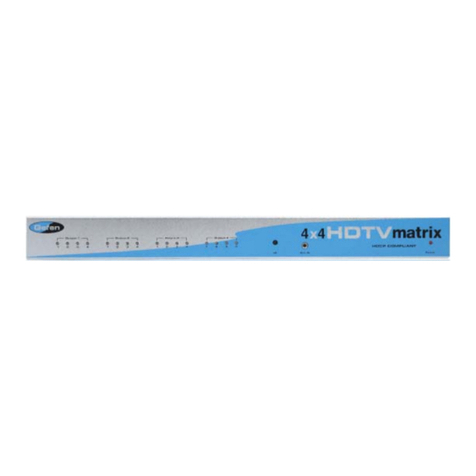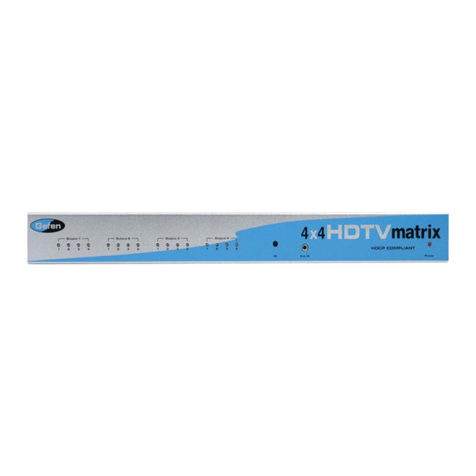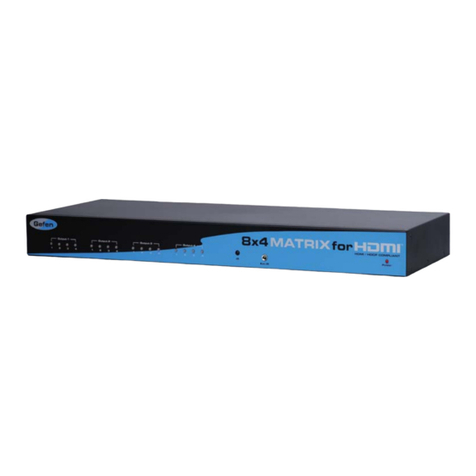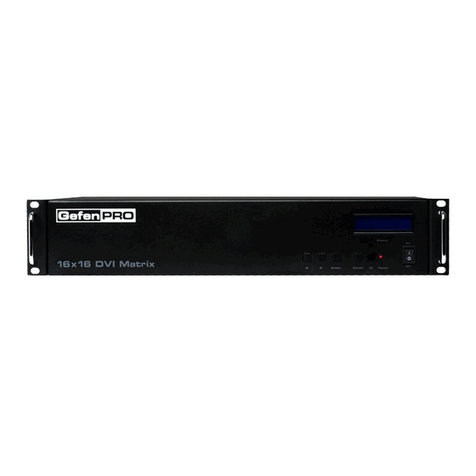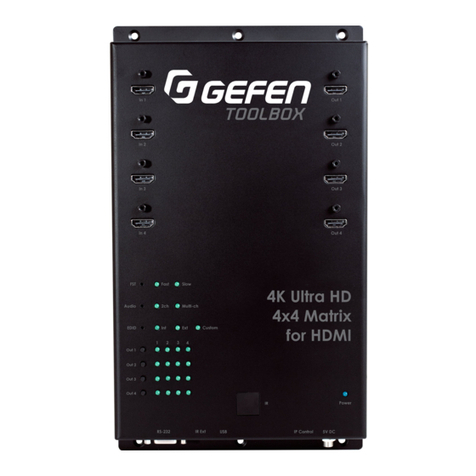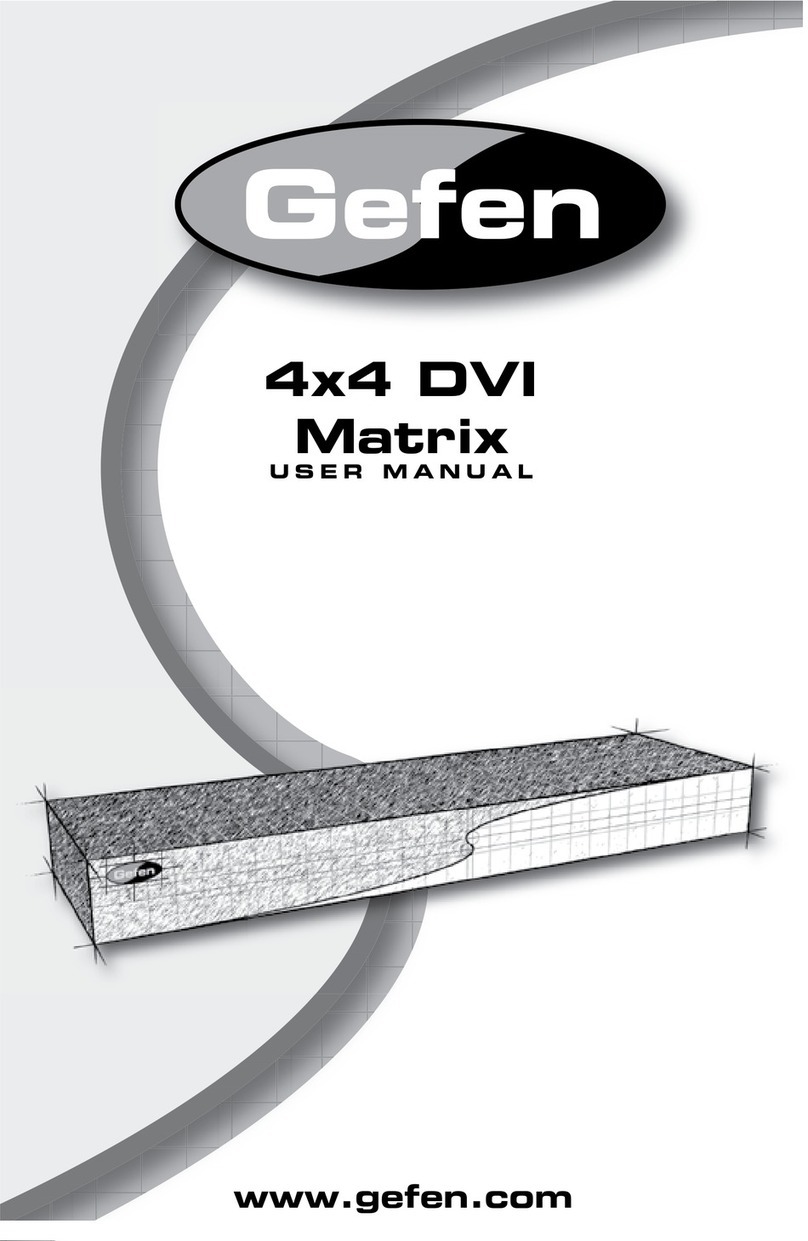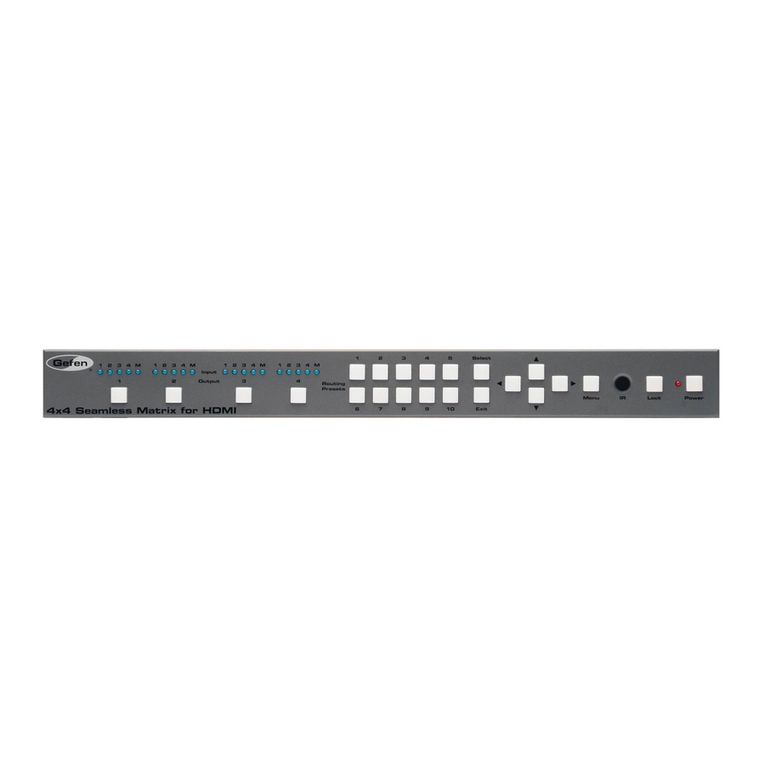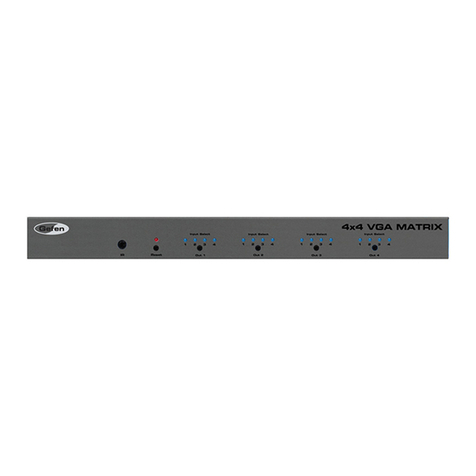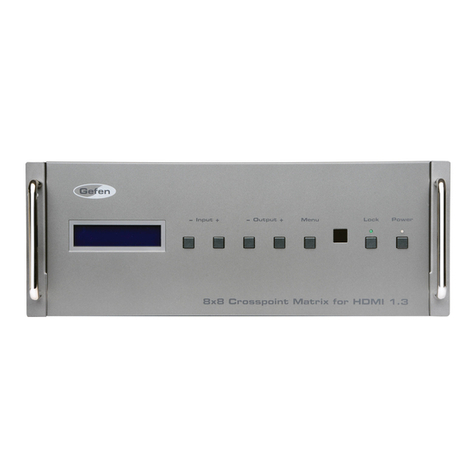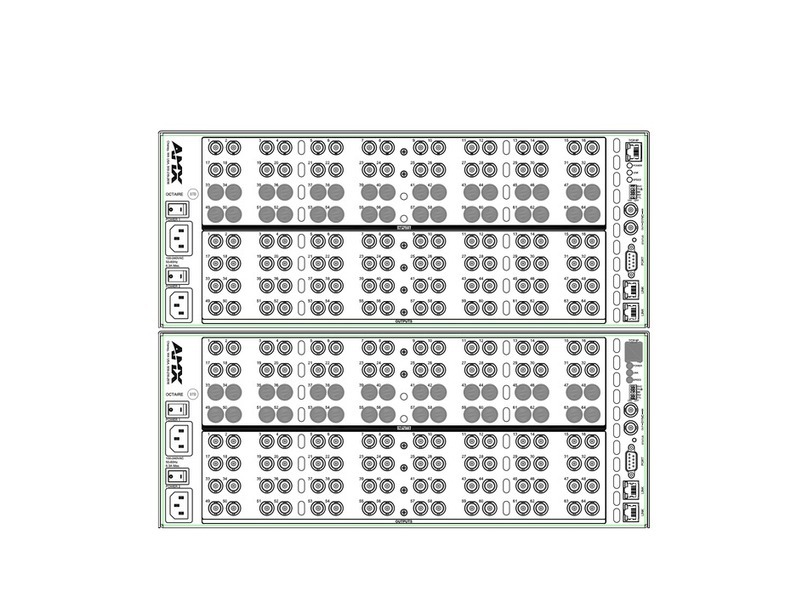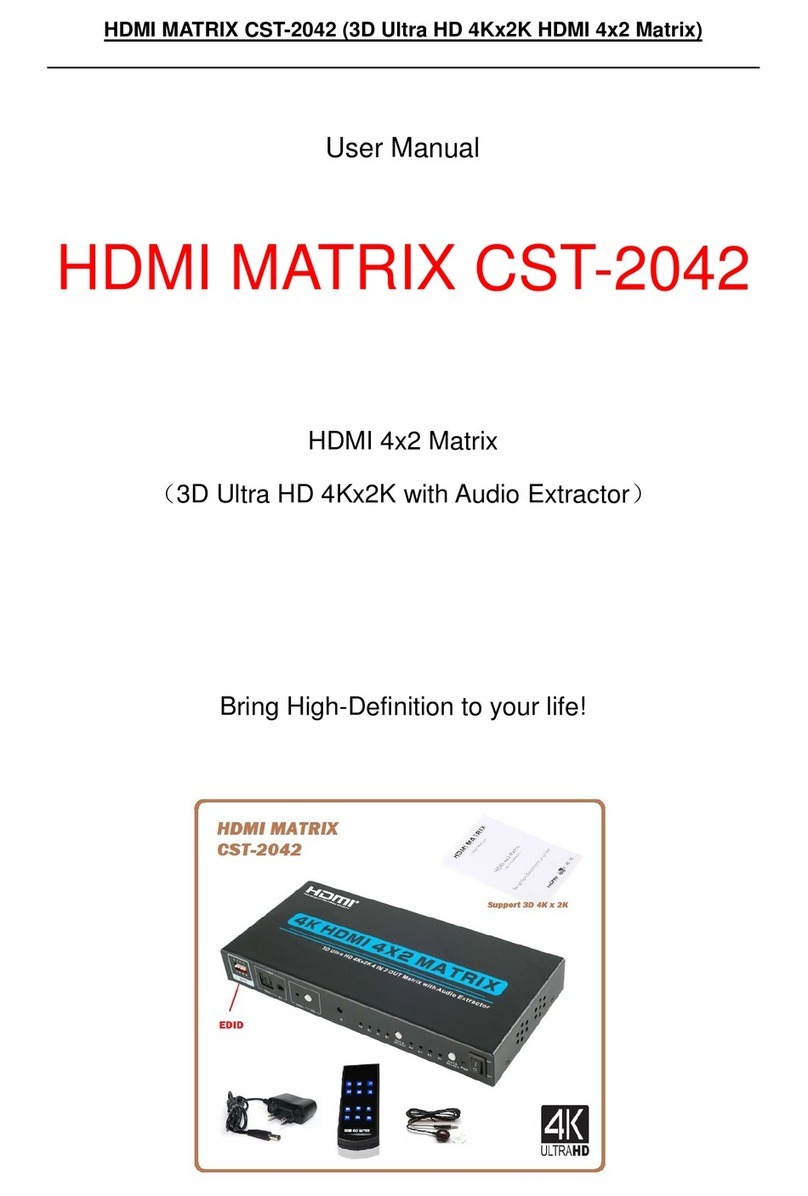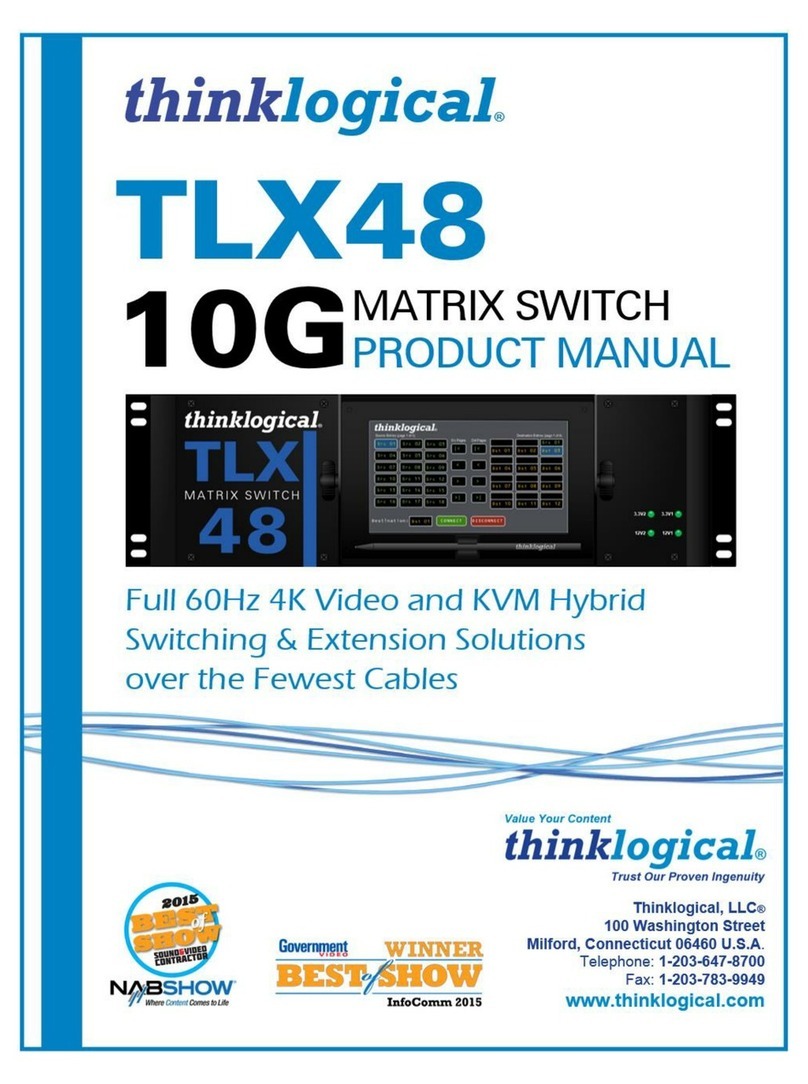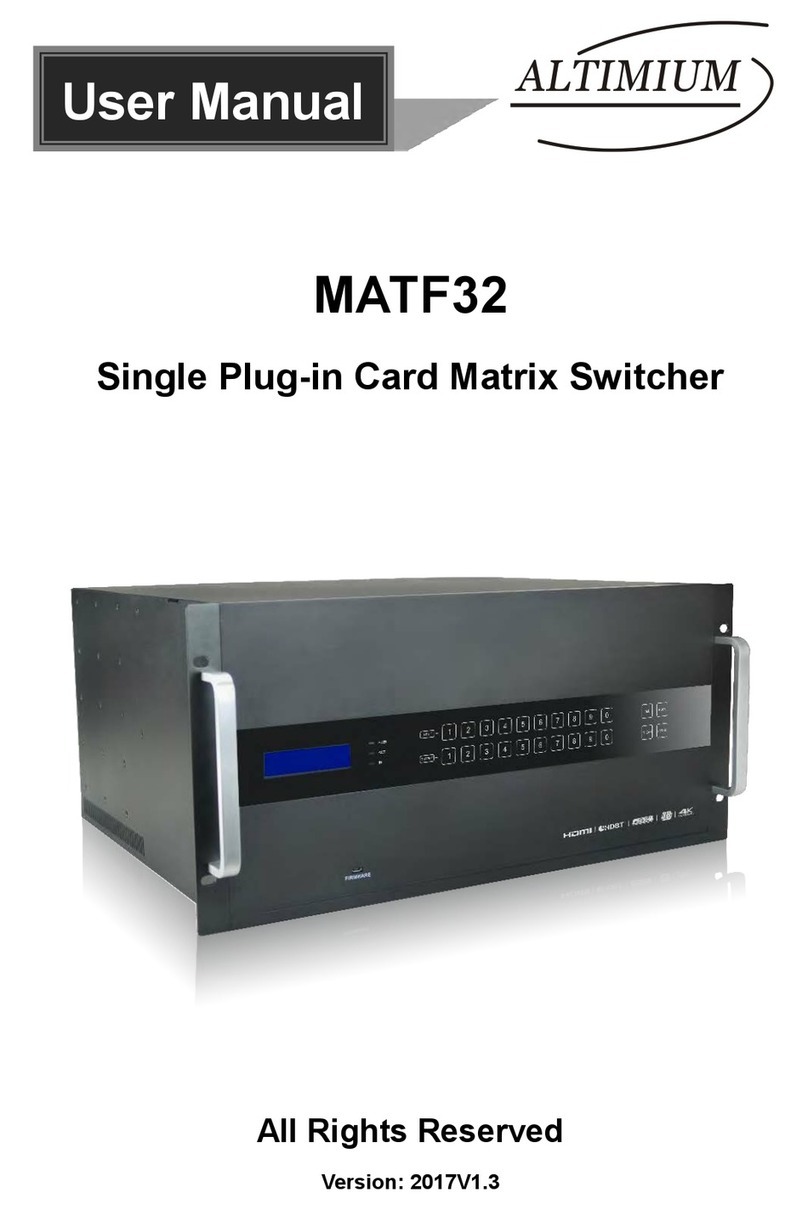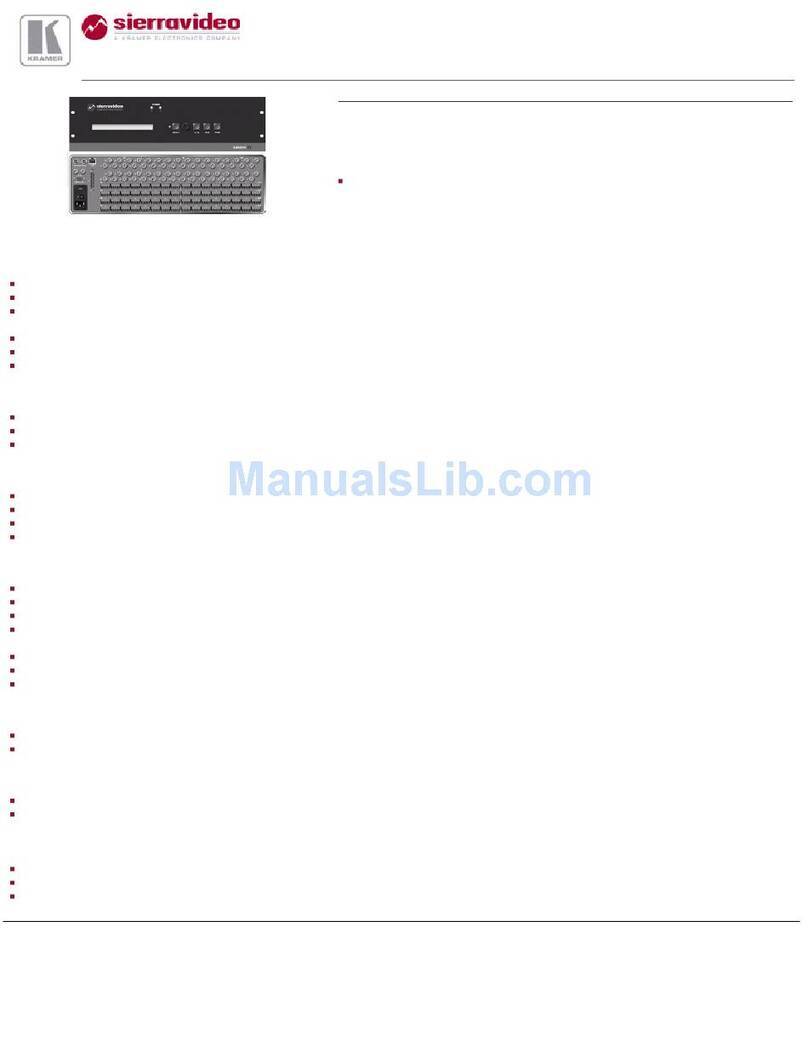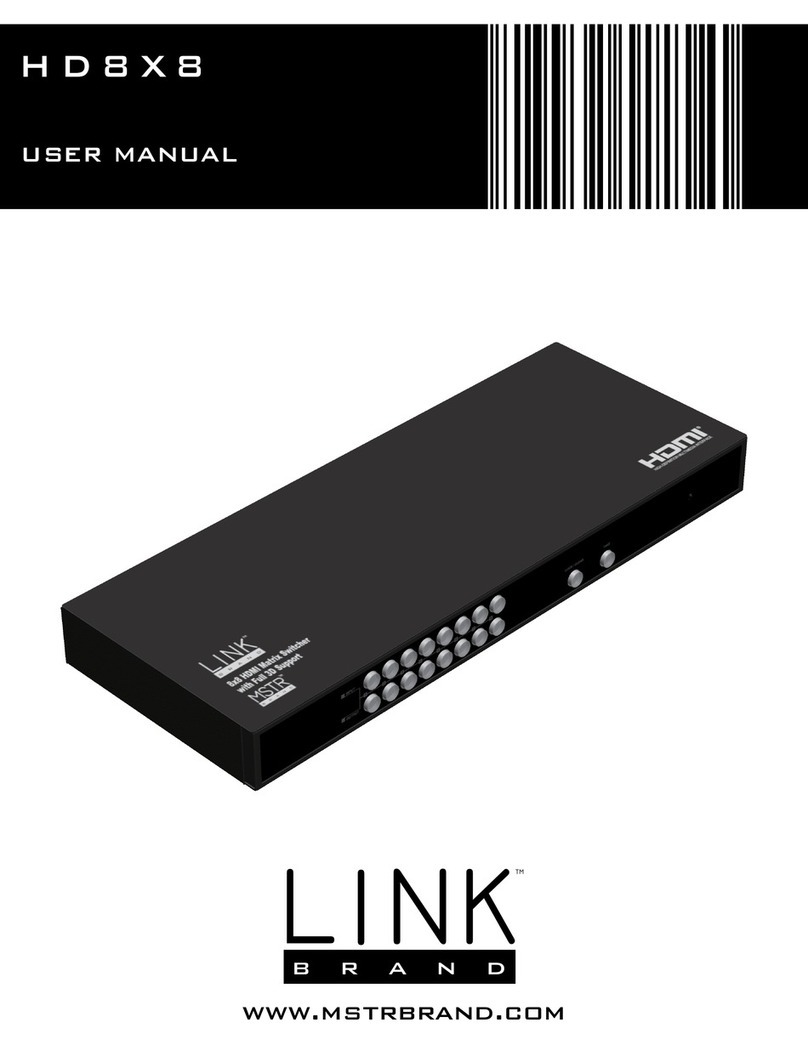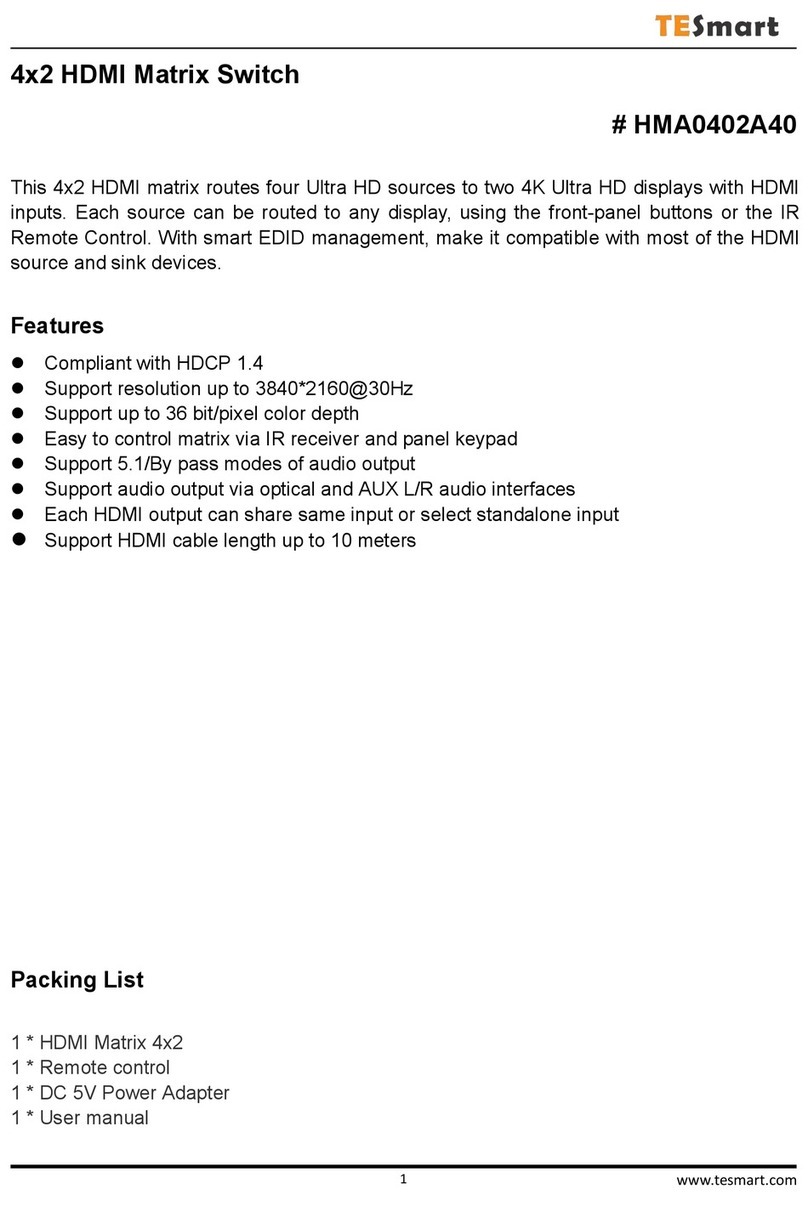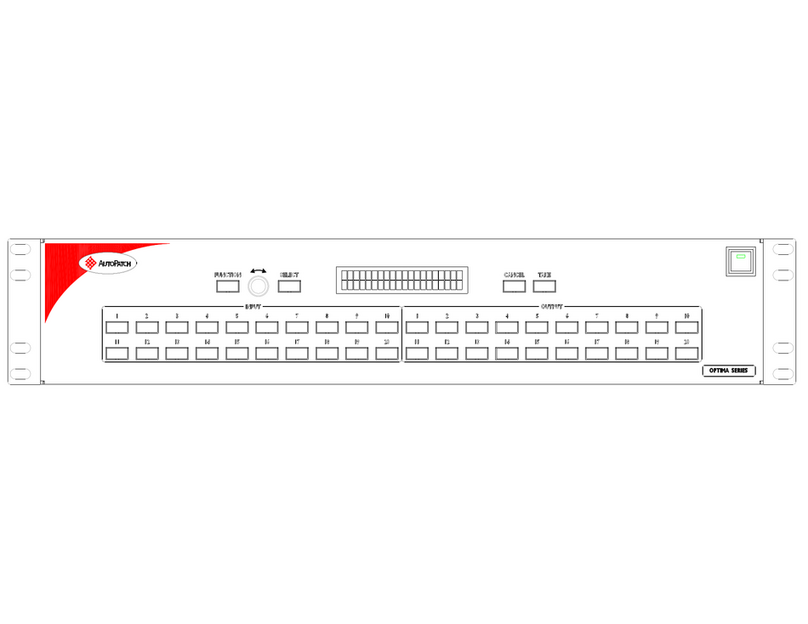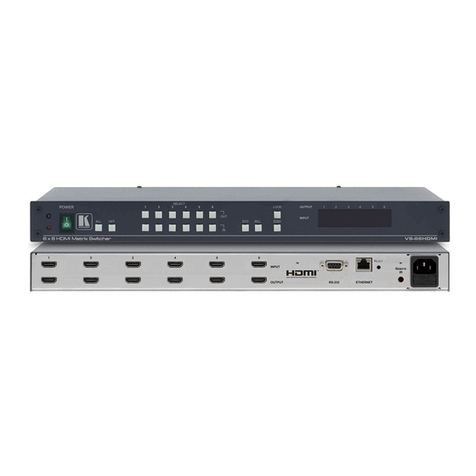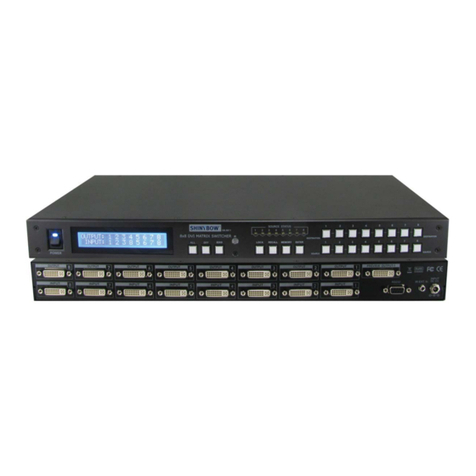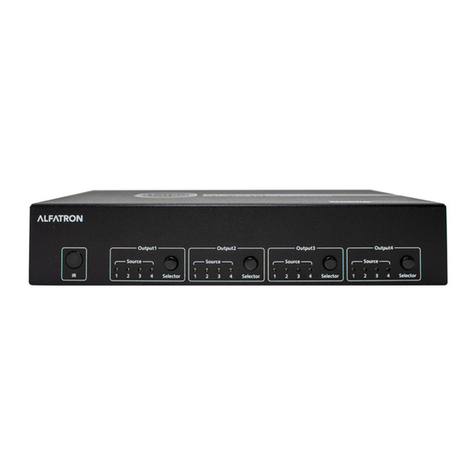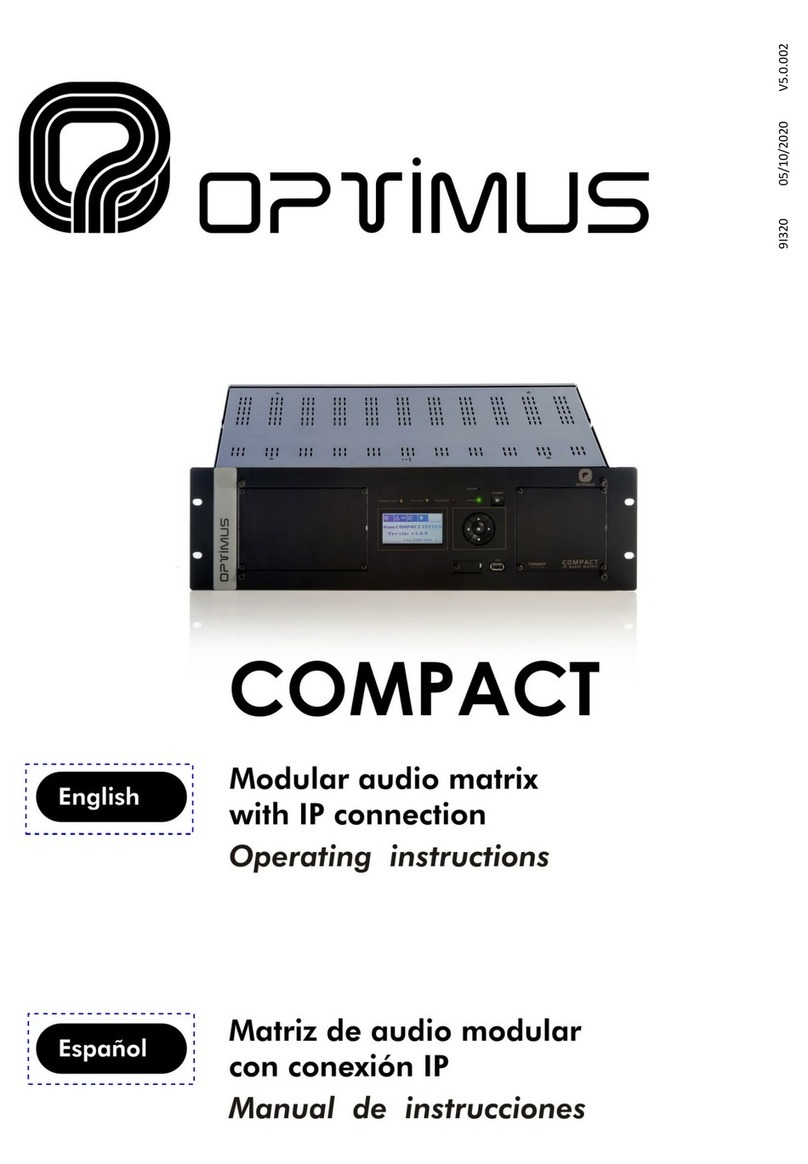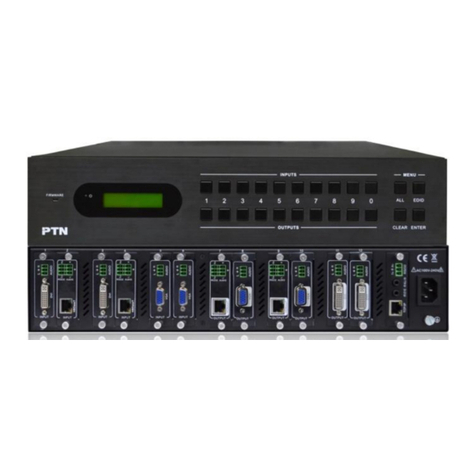6
SENDER PANEL DESCRIPTIONS
HDMI Output 4 CAT5 Extension Ports14 DDC and video output ports for extension to remote receiver. Both cables
must be connected for proper operation.
HDMI 1 Extension Input Port15 For proper extension, the supplied 1 foot HDMI jumper cable must be
attached between this port (15) and HDMI Output Port 2 (24).
HDMI 4 IR Blaster Port16 Optional IR emitter (Part# EXT-2IREMIT) can be attached to relay IR
commands from the remote receiver to the blaster for remote control of
devices.
RS-232 Serial Control Port17 Switching can be controlled via the RS-232 port. Please see page 18 for
details on the available commands and pin-outs.
HDMI Input 118 Connect a source device to this input.
HDMI Input 219 Connect a source device to this input.
HDMI Input 320 Connect a source device to this input.
HDMI Input 421 Connect a source device to this input.
HDMI Output 122 Connect a display to this output port. If using the built-in extension
functionality, connect this output port (22) to the HDMI 1 extension input port
(6) using the supplied 1 foot HDMI jumper cable.
HDMI Output 223 Connect a display to this output port. If using the built-in extension
functionality, connect this output port (23) to the HDMI 2 extension input port
(9) using the supplied 1 foot HDMI jumper cable.
HDMI Output 324 Connect a display to this output port. If using the built-in extension
functionality, connect this output port (24) to the HDMI 3 extension input port
(12) using the supplied 1 foot HDMI jumper cable.
HDMI Output 425 Connect a display to this output port. If using the built-in extension
functionality, connect this output port (25) to the HDMI 4 extension input port
(15) using the supplied 1 foot HDMI jumper cable.
24V DC Power Input26 Connect the supplied 24V DC Power supply to this input.
